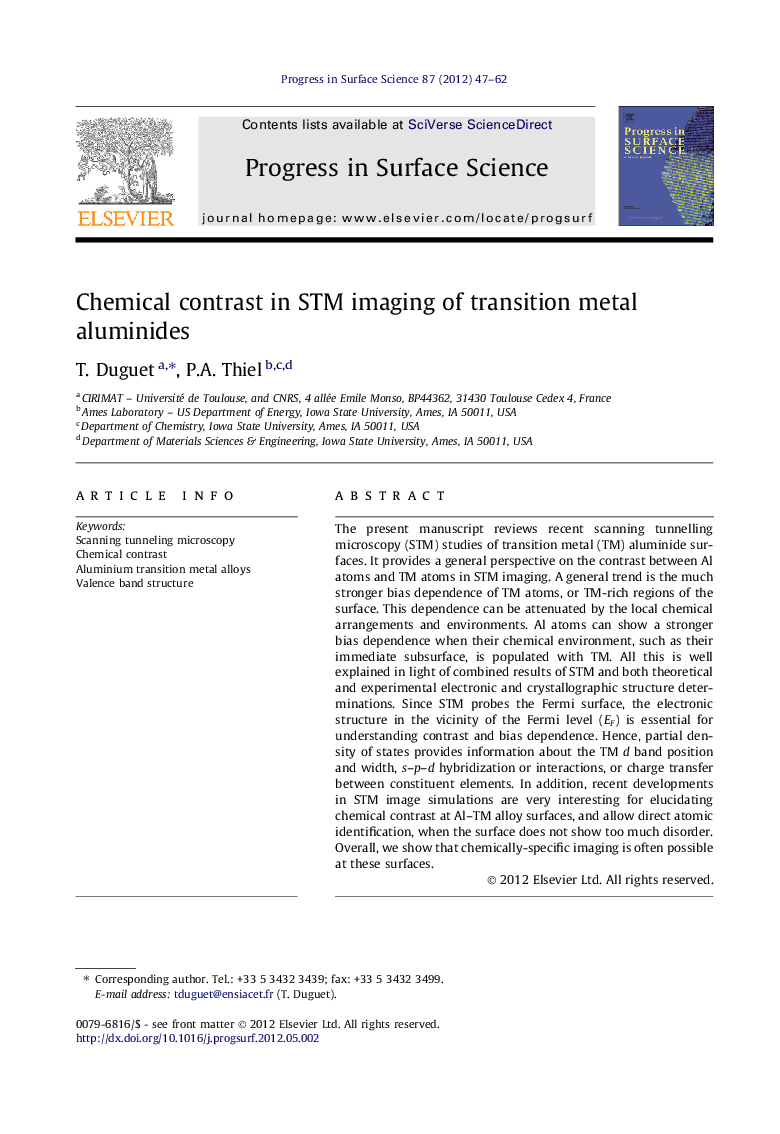| Article ID | Journal | Published Year | Pages | File Type |
|---|---|---|---|---|
| 5419960 | Progress in Surface Science | 2012 | 16 Pages |
Abstract
The present manuscript reviews recent scanning tunnelling microscopy (STM) studies of transition metal (TM) aluminide surfaces. It provides a general perspective on the contrast between Al atoms and TM atoms in STM imaging. A general trend is the much stronger bias dependence of TM atoms, or TM-rich regions of the surface. This dependence can be attenuated by the local chemical arrangements and environments. Al atoms can show a stronger bias dependence when their chemical environment, such as their immediate subsurface, is populated with TM. All this is well explained in light of combined results of STM and both theoretical and experimental electronic and crystallographic structure determinations. Since STM probes the Fermi surface, the electronic structure in the vicinity of the Fermi level (EF) is essential for understanding contrast and bias dependence. Hence, partial density of states provides information about the TM d band position and width, s-p-d hybridization or interactions, or charge transfer between constituent elements. In addition, recent developments in STM image simulations are very interesting for elucidating chemical contrast at Al-TM alloy surfaces, and allow direct atomic identification, when the surface does not show too much disorder. Overall, we show that chemically-specific imaging is often possible at these surfaces.
Related Topics
Physical Sciences and Engineering
Chemistry
Physical and Theoretical Chemistry
Authors
T. Duguet, P.A. Thiel,
